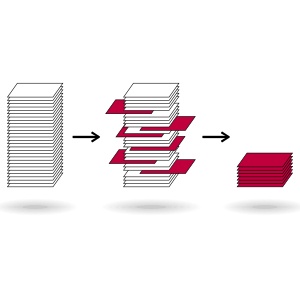 In a previous blog, I wrote about unstructured data in the healthcare industry and EHR systems. Unstructured data can consist of explanations of benefits, audio voice dictations, handwritten and typewritten notes, diagnostic images, e-mail messages and attachments, text messages, medical claims and more. Although it can sometimes be hard to access programmatically, unstructured data often includes information that is a valuable part of a patient’s medical record and clinical history.
In a previous blog, I wrote about unstructured data in the healthcare industry and EHR systems. Unstructured data can consist of explanations of benefits, audio voice dictations, handwritten and typewritten notes, diagnostic images, e-mail messages and attachments, text messages, medical claims and more. Although it can sometimes be hard to access programmatically, unstructured data often includes information that is a valuable part of a patient’s medical record and clinical history.
Again, by being able to analyze unstructured data along with its structured counterpart, clinicians can provide a more complete picture of a patient’s history, diagnosis, treatment and outcome. It can help maintain data consistency, allow for combined qualitative and quantitative data and can be highly valuable when used in a research capacity.
When properly captured into a data structure or application, unstructured data can be effectively utilized through:
- Analytics applications
- A complete EHR system that incorporates both unstructured and structured data sources
- Cloud-based patient engagement solutions that gather symptoms reported to physicians by patients and discreetly capture them for analyzation
- Natural language processing tools that analyze unstructured data for specific, key terms, extract information from that data and produce reports for clinicians (This is a big one!)
- HIE and document management systems that allow viewing, collaboration and reviewing of various unstructured documents
- Population health management programs that prompt proactive and preventive interventions
- Insights systems that merge unstructured and structured data for a more complete picture of patients
These technologies make unstructured data useful and actionable to provide the following benefits:
- Improved outcomes and reduced costs
- Retrieval of patient medical history to decrease readmission for specific diseases, resulting in reduced compliance fines
- Increased practice efficiency for physicians
- Incorporation into predictive analytics to better target high-risk patients, thereby reducing preventable readmissions
- Optimized patient interaction coding
- More specific diagnoses
- Higher data quality and integrity
The amount of unstructured data will increase over the next decade as more electronic solutions are introduced, and it’s important not to ignore its value to the healthcare industry. The data can be used to produce unique insights for clinicians and can be incorporated into big data to improve care coordination and even help meet clinical quality guidelines.
Learn More
At Syntrix Consulting, we can work with you to ensure your data is optimized to its fullest capacity, resulting in additional benefits across your organization. Our suite of data analytics applications are designed to ensure data integrity in healthcare business intelligence solutions and can help you integrate and get value out of your unstructured EHR data. Contact us to learn more.
For more information on what Epic reporting is, how it can help your healthcare facility, and how to have a successful implementation, download our FREE eBook:
